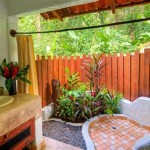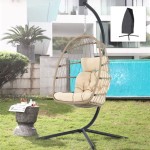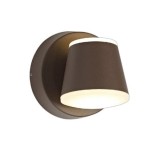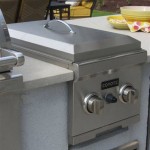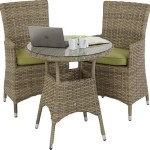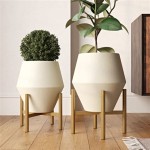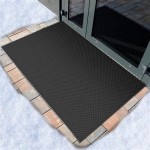Outdoor Furniture in Vero Beach, Florida: A Guide to Selection and Maintenance
Vero Beach, Florida, with its idyllic climate and coastal charm, encourages an outdoor lifestyle. This, in turn, makes selecting appropriate and durable outdoor furniture a significant consideration for homeowners, businesses, and community spaces. The longevity and aesthetic appeal of outdoor furniture in Vero Beach are directly impacted by factors such as material choice, construction quality, and ongoing maintenance practices. Understanding these key aspects is crucial for making informed decisions and maximizing the value of an investment in outdoor furnishings.
The marine environment of Vero Beach presents unique challenges. Saltwater, humidity, and intense sunlight contribute to the degradation of many materials. Therefore, selecting furniture specifically designed to withstand these conditions is paramount. Considerations extend beyond simple aesthetics to encompass the long-term durability and functionality of the selected pieces.
Material Considerations for Vero Beach's Climate
The selection of appropriate materials is the cornerstone of ensuring longevity in outdoor furniture in a marine environment. Several options offer varying degrees of resistance to the elements prevalent in Vero Beach.
Teak: Teak is a naturally dense hardwood celebrated for its exceptional durability and inherent resistance to moisture, insects, and decay. Its high oil content acts as a natural preservative, making it well-suited for outdoor applications, even without additional treatment. Over time, untreated teak will develop a silver-gray patina, which is aesthetically pleasing to many. However, regular cleaning with teak-specific cleaners can help maintain its original color, if desired. The cost of teak furniture is often higher compared to other materials, reflecting its quality and longevity. Its sustainability as a sourced material is also a growing concern, which can be addressed by ensuring furniture is sourced from responsibly managed teak plantations.
Aluminum: Aluminum, particularly powder-coated aluminum, is a popular choice for outdoor furniture due to its lightweight nature, resistance to rust, and relatively low maintenance requirements. Powder coating provides an additional layer of protection against scratches, fading, and corrosion. Aluminum frames are often used in conjunction with other materials like synthetic wicker or textilene fabric for seating surfaces. The lightness of aluminum makes it easy to move and rearrange furniture as needed, but it can also make it susceptible to being blown around in strong winds. Selecting heavier gauge aluminum or anchoring the furniture can mitigate this issue.
Synthetic Wicker: Synthetic wicker, typically crafted from polyethylene or PVC, offers the aesthetic appeal of natural wicker without the susceptibility to moisture damage and insect infestation. High-quality synthetic wicker is UV-resistant, preventing fading and cracking from prolonged sun exposure. It is also relatively easy to clean and maintain, requiring only occasional washing with soap and water. The quality of synthetic wicker can vary significantly. Higher-quality options are often more expensive but offer superior durability and resistance to wear and tear. Lower-quality options may become brittle and crack over time, especially with prolonged exposure to sunlight.
High-Density Polyethylene (HDPE): HDPE is a recycled plastic material known for its exceptional durability and resistance to a wide range of environmental factors, including moisture, UV radiation, and insects. It is often used to create furniture that mimics the look of painted wood but requires significantly less maintenance. HDPE furniture is available in a variety of colors and styles, and it can be easily cleaned with soap and water. Its solid construction and resistance to splintering make it a safe and long-lasting option for outdoor use. While it may not have the same aesthetic appeal as natural wood, HDPE offers a practical and environmentally friendly alternative.
Textilene Fabric: Textilene is a woven mesh fabric made from PVC-coated polyester yarn. It is known for its strength, durability, and resistance to fading, mildew, and stains. Textilene is often used for sling-style seating and cushions in outdoor furniture. Its open weave allows for air circulation, making it comfortable to sit on even in hot weather. Textilene is also relatively easy to clean and maintain. Regular washing with soap and water is usually sufficient to remove dirt and grime. The material's inherent strength also prevents sagging during prolonged use.
Construction Quality and Durability
Beyond the material, the construction quality of outdoor furniture significantly impacts its lifespan and ability to withstand the Vero Beach environment. Attention to detail in the manufacturing process is crucial.
Joint Construction: The way that different pieces of the furniture are joined together directly affects its structural integrity. Welded joints, particularly in aluminum or steel frames, provide the strongest and most durable connections. Screwed or bolted connections, while often less expensive, can loosen over time due to vibration and environmental factors. Regularly inspecting and tightening any screws or bolts is essential for maintaining the stability of the furniture. Dovetail joints in wooden furniture represent another strong and durable connection method. The interlocking nature of these joints provides enhanced resistance to stress and prevents the pieces from pulling apart.
Frame Reinforcement: Look for furniture with reinforced frames, particularly in areas that are subject to high stress, such as the legs and armrests. Reinforcement can be achieved through the use of thicker materials, additional bracing, or strategically placed gussets. This added support helps to distribute weight evenly and prevents the furniture from bending or breaking under pressure. The reinforcement needs to be appropriately chosen for the material of the frame; steel reinforcement in an aluminum frame can cause corrosion as the two metals react.
Weather-Resistant Fasteners: Using stainless steel or other corrosion-resistant fasteners is essential for preventing rust and degradation. These fasteners will maintain their strength and integrity even when exposed to moisture and saltwater. Avoid using regular steel fasteners, as they will quickly corrode and weaken the structure of the furniture. Inspect fasteners regularly and replace any that show signs of rust or corrosion.
Finish Quality: The quality of the finish applied to the furniture plays a vital role in protecting it from the elements. Powder-coated finishes on metal frames provide a durable and long-lasting barrier against rust and corrosion. High-quality paints and stains on wooden furniture help to protect it from moisture damage and UV fading. The finish should be applied evenly and thoroughly to all surfaces, including hard-to-reach areas. A properly applied finish will not only enhance the appearance of the furniture but also extend its lifespan.
Cushion Construction: For furniture with cushions, consider the quality of the foam and fabric. Look for cushions made with mildew-resistant and UV-resistant materials. The foam should be dense enough to provide adequate support and comfort. The fabric should be durable and easy to clean. Zippers that allow for easy removal and cleaning of the cushion covers are a valuable feature. Consider also drainage in the cushion to prevent water pooling inside during rain.
Maintenance Practices for Outdoor Furniture Longevity
Even the most durable outdoor furniture requires regular maintenance to ensure its longevity and aesthetic appeal. Implementing a consistent maintenance routine can significantly extend the lifespan of the furniture and protect it from the damaging effects of the Vero Beach environment.
Regular Cleaning: Regular cleaning is the most fundamental aspect of outdoor furniture maintenance. Salt spray, dust, dirt, and pollen can accumulate on the furniture, leading to discoloration, corrosion, and deterioration. Washing the furniture with soap and water every few weeks is usually sufficient to remove these contaminants. For more stubborn stains, use a mild detergent or a specialized outdoor furniture cleaner. Avoid using harsh chemicals or abrasive cleaners, as they can damage the finish. Rinsing thoroughly with clean water is essential to remove any soap residue.
Protective Covers: When the furniture is not in use, consider using protective covers to shield it from the elements. Outdoor furniture covers are available in a variety of materials and sizes. Look for covers that are waterproof, UV-resistant, and breathable. The covers should fit snugly around the furniture to prevent wind from blowing them off. Using covers can significantly reduce the amount of exposure the furniture receives to sun, rain, and salt spray. Even in the shade, UV can affect furniture and covers can act as a suitable block.
Seasonal Storage: During the off-season, or periods of prolonged absence from the property, storing the furniture indoors is the best way to protect it from the elements. If indoor storage is not possible, move the furniture to a covered area, such as a garage, porch, or shed. Stack the furniture neatly to save space and protect it from damage. Before storing the furniture, clean it thoroughly and apply a protective coating, such as a wax or sealant. When possible, disassembling furniture helps in storage. Cushions should be stored indoors to prevent moisture and mildew damage. Storing them in an airtight container or vacuum sealed bag will also prevent pests from nesting in the fabric.
Immediate Spill Cleanup: Addressing spills promptly prevents staining and damage. Use a clean cloth or sponge to blot up the spill immediately. Avoid rubbing the spill, as this can spread it and make it more difficult to remove. For stubborn stains, use a specialized stain remover designed for outdoor furniture fabrics. Be sure to test the stain remover on an inconspicuous area of the fabric first to ensure that it does not cause any discoloration. Regularly inspect cushions for mold or mildew, especially after heavy rains. If mold or mildew is present, clean the cushions with a solution of bleach and water. Be sure to rinse thoroughly and allow the cushions to dry completely before using them again.
Regular Inspection and Repair: Periodically inspect the furniture for signs of damage, such as loose screws, cracked frames, or faded finishes. Tighten any loose screws or bolts. Repair any cracks or breaks in the frame. Touch up any faded finishes with a matching paint or stain. Addressing these issues promptly can prevent them from escalating into more serious problems. Consider hiring a professional furniture repair service for more complex repairs. Keeping an eye on the furniture will enable one to tackle small issues before they become complicated.
Choosing the right outdoor furniture for Vero Beach requires a careful consideration of materials, construction, and maintenance. By selecting durable materials, ensuring quality construction, and implementing a consistent maintenance routine, individuals can protect their investment and enjoy their outdoor living spaces for years to come.

Vero Beach Furniture Store Sunshine Casual

Vero Beach Furniture Store Sunshine Casual

Outdoor Furniture Vero Beach

Outdoor Furniture Vero Beach

Vero Beach Furniture Store Sunshine Casual

Outdoor Furniture Vero Beach

Vero Beach Furniture Store Sunshine Casual

Outdoor Furniture Vero Beach

Vero Beach Furniture Store Sunshine Casual

Outdoor Casual Furniture Showroom

